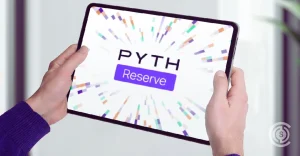
Bitcoin
BTC (24h)
Ethereum
ETH (24h)

Binance
BNB (24h)

XRP
XRP (24h)

Cryptocurrency exchanges are digital marketplaces where individuals can purchase, sell, and trade Bitcoin, Ethereum, and other cryptocurrencies. These bridge fiat currency (real money) and cryptocurrency, providing users with easy entry into a growing market.
Although crypto exchanges provide varying services, their significance lies in their ability to combine storage, price reliability, and access to a large variety of coins and tokens. They offer invaluable services for both novice and advanced traders via mobile apps, advanced charts, and customer support.
The most popular worldwide exchanges are compared based on fees, security, access to multiple coins, trading tools available, and overall ease of use.
| Exchanges | Launch | Meta | Purchase Methods |
|---|---|---|---|
 Coinbase Coinbase |
June 2012 | Exchange, Trading, Security | Bank Transfer, Card, PayPal, Crypto |
 PrimeXBT PrimeXBT |
May 2018 | Derivatives, Leverage, Trading | Credit/Debit Card, Bank Transfer, Crypto |
 MEXC MEXC |
April 2018 | Exchange, Futures, NFT | Card, Bank Transfer, Crypto, Third-Party |
 Margex Margex |
December 2020 | Futures, Leverage, Staking | Crypto deposits – BTC, ETH, USDT |
 Bitfinex Bitfinex |
November 2012 | Exchange, Margin, Liquidity | Bank Transfer, Card, Crypto |
 Gemini Gemini |
October 2014 | Exchange, Security, Custody | Card, Bank Transfer, ACH, Crypto |
 Kraken Kraken |
September 2011 | Exchange, Security, Staking | Bank Transfer, Card, Crypto |
 Poloniex Poloniex |
January 2014 | Altcoins, P2P, Trading | Crypto deposits, limited fiat options |
 CEX.io CEX.io |
December 2013 | Fiat Bridge, Exchange, Trading | Card, SEPA, SWIFT, Crypto |
 OKX OKX |
January 2017 | Exchange, DeFi, Transparency | Card, Bank Transfer, P2P, Crypto |
Coinbase is a US-based company that supports multiple cryptocurrencies and has been operating since 2012. The platform is feature-rich and includes margin and options trading, educational materials, and wallet capabilities. It also has competitive deposit/withdrawal fees, but those are subject to regional jurisdiction. Coinbase lets you deposit money into your wallet via bank and card transfers.
Thanks to its strong regulatory standing, brand trust, and growing institutional suite, Coinbase has become an industry standard. Its agenda for innovation, including DEX aggregation and derivatives support, demonstrates the platform’s interest in remaining competitive.
Pros
Cons
Coinbase is highly rated for UI/UX and security because it has a clean design and enforces industry standards. Rewards and staking are rated well, and editorial quality is very good and clear due to its ongoing status updates.
Founded in 2018 and based in Seychelles, PrimeXBT supports multiple crypto derivatives but doesn’t feature a large spot trading marketplace. While deposit and withdrawal fees vary by method and region, it boasts strong security features like 2FA and data encryption. The platform is available as an app for mobiles and has attractive features like referral programs and a trading UI designed for advanced traders. Derivatives (futures/CFD) are the core of the product, while margin and options are limited.
We chose PrimeXBT for its very low fees for futures trading, high leverage, and liquidity, which may appeal to more experienced traders. The competitive cost structure and advanced trading tools for participants make it an interesting choice as we head into 2026.
Pros
Cons
PrimeXBT is rated well for its fees, liquidity, and advanced trading tools. UI/UX and security are strong. Regulatory coverage and basic spot market support lower the overall score.
Founded in 2018, MEXC allows spot and derivative trading for a wide variety of cryptocurrencies. Its deposit and withdrawal fees vary depending on the token and method. It also offers staking, NFT indices, app features, alerts, wallet services, and token listing platforms. It aims to be a comprehensive ecosystem.
MEXC joins this list due to its diverse product offering, strong token listing support, and lower futures trading costs. Users who want to use a single trusted crypto exchange to meet their various trading needs will particularly find the MEXC platform attractive as it supports spot, derivatives, and NFT products.
Pros
Cons
MEXC ranks well for product diversity, liquidity, as well as token access. The security and UI are top-notch, although regulatory presence is weaker compared to other regulated exchanges.
Margex is located in Seychelles, provides access to trading in approximately 46 crypto pairs, and is accessible in about 153 countries, barring the United States. Deposits/ withdrawals and fees vary by token, and the minimum withdrawal may be high. Margex does provide security with cold storage and 2FA, but without formal proof of reserves or regulatory oversight. Specializing in “perpetual futures contracts” that offer leveraged trading, Margex also provides features like staking, copy trading, and crypto conversion.
We selected Margex because its simple, easy-to-use interface aligns with the needs of traders who typically seek leverage and want to learn. Margex also includes features like copy trading and staking, which appeal to traders who expect more than just futures markets.
Pros
Cons
Overall, Margex has a significantly high rating for features, leverage access, and flexibility. The biggest challenges, however, revolve around regulatory oversight, withdrawal, and limited asset availability compared to other exchanges.
Bitfinex operates under the parent company iFinex, and is based in the British Virgin Islands (with operational connections in Hong Kong/Taipei), with a mandatory KYC process in most jurisdictions. All tokens available on the platform have minimum withdrawal amounts and different withdrawal fees. It has alert/notifications tools, a mobile app, a referral program, and a variety of products (spot, derivatives, lending, trading tools).
Bitfinex earns its way into our Top 10 for its high liquidity, variety of features (including lending and perpetual swaps), and customizable orders. Although it isn’t beginner-friendly, it’s a top choice if you’re looking for low slippage and high-functioning trading opportunities.
Pros
Cons
Bitfinex has decent fees (relatively speaking, if you are a serious trader), and scores high in liquidity and trading tools. The UI/UX is highly rated, but jurisdictional limitations and past security breaches have reduced its scores considerably.
Gemini was established in 2014 by Cameron and Tyler Winklevoss and is based in the United States. It is an exchange with a strong regulatory focus and provides institutional-grade custody. Although they operate in a few countries, Gemini provides both a basic and a “Pro” account experience. The platform is expanding its regulatory footprint (including a MiCA license in Europe) and can support fiat deposit/withdrawal (USD, etc), multiple crypto pairs, and staking where applicable.
Gemini falls into the list because of the strong regulatory focus (security, licensing, etc), transparency, and dual retail/institutional focus. The fact that they’re moving towards an IPO process and licensing in Europe in 2026 adds to their legitimacy.
Pros
Cons
Gemini is rated highly for security, compliance, and institutional readiness. Fees are average, not the lowest, and support is a weaker area. Overall, it’s a reliable choice for users who prioritize regulated environments.
Kraken operates out of the United States, but it is also available in many countries globally. The platform supports fiat currencies (USD, EUR, etc.), provides options, and offers sophisticated methods for cryptocurrency trading. It features a wide variety of products, including spot, staking, futures, and margin trading, and it has a history of being a secure and trustworthy platform.
We chose Kraken because it has a robust infrastructure, high trust, transparent proof-of-reserves, and all-encompassing products and features. It appeals to various users, including beginners and professionals.
Pros
Cons
Kraken scores extremely well across its rating criteria for security, trust, and reliability. Trading fees are reasonable, the UI/UX is well organized, and rewards or staking yield opportunities are offered as incentives.
Since its inception in 2014, Poloniex has been a trusted crypto exchange with a reputation for being one of the biggest altcoin exchanges in the space. In recent years, it has pivoted towards derivatives and token innovation a bit more. Poloniex does not typically allow direct fiat deposits in most countries, and the futures market is limited.
We included Poloniex because of its unique strength in altcoins, relisted tokens, and its P2P and derivatives offerings. While this may not be top-tier across the board, it exposes consumers to newer projects.
Pros
Cons
With respect to token access and features, Poloniex ranks pretty well. Still, limited liquidity and fiat limitations decrease the score compared to exchanges that are generally full-spectrum exchanges.
Founded in the UK in 2013, CEX.io is an exchange that allows spot trading, staking, margin trading, and fiat-to-crypto transactions. It mainly targets users who want to access a variety of advanced tools. CEX.io supports fiat in many regions, and withdrawal/deposit fees depend on the area and method.
CEX.io maintains a mix of user-friendliness and regulated comfort with its fiat rails. The access appeal is especially relevant for new user segments who generally want a quick-to-engage cryptocurrency solution with fiat options over limited access.
Pros
Cons
CEX.io ranks well in areas of accessibility and capability for fiat rails, yet falls behind other leading exchanges in advanced features, liquidity, and lowest fees.
OKX (formerly known as OKEx) is a highly regarded global cryptocurrency exchange that launched in 2017. It offers a broad range of products that include spot, derivatives, staking, DeFi access, and a complete Web3 ecosystem. OKX has tens of millions of users globally, facilitates fiat deposits/withdrawals in several regions, bolsters multiple trading pairs, offers derivatives, and ranks higher than Poloniex in user experience in direct comparisons.
We decided to include OKX because it is a strong all-around player with deep markets and competitive fees. Its ecosystem continues to evolve with proof-of-reserves transparency, high scalability, and liquidity.
Pros
Cons
OKX is top-rated in terms of product range, liquidity, and transparency. Security, user experience, and fees are positive features, making it perfect for serious day-traders.
In 2026, choosing a cryptocurrency exchange involves weighing many factors, including trading safety, efficiency, and long-term growth. The crypto exchange landscape has become competitive, with exchanges offering staking, NFTs, derivatives trading, and exposure to various DeFi services, in addition to their core exchange services.
If you appreciate the assurance of regulatory compliance provided by Gemini and Kraken, the international liquidity offered by Coinbase and OKX, or the cost-effective, high-leverage opportunities presented by PrimeXBT and Margex, there is an exchange to accommodate every trading preference. The best exchange is ultimately determined by your personal priorities when trading, whether it be low fees, institutional-level security, variety of assets, or advanced trading platforms.
Cryptocurrency exchanges generate revenue in many ways. They charge a fee for any deposit/withdrawal, trading fees using a bid/ask spread, charge listing fees for newly issued tokens, earn interest on margin lending, make a profit on working with payment platforms, and profit from their own token sales.
Depositing has been made easy. All you need to do is copy the casino’s wallet address, send the funds from your crypto wallet, and your balance updates within minutes. Withdrawals also work in the same way.
Lucky Block is a popular casino product with a native token that adds utility for holders. The casino offers big welcome promotions and recurring event-style bonus offers, but it is surprisingly well-known to use the native token to unlock cashback and staking-style benefits. With licensing in place, Lucky Block runs a regular calendar sale of slot games to sportsbook bettors.
Depositing has been made easy. All you need to do is copy the casino’s wallet address, send the funds from your crypto wallet, and your balance updates within minutes. Withdrawals also work in the same way.
Crypto casinos offer thousands of slots, ranging from classic 3-reel games to video slots and progressive jackpots. The popular titles available include Sweet Bonanza, Gates of Olympus, and Book of Dead.
Crypto casinos use blockchain verification and SSL encryption, which provide strong security. These measures are there to ensure that users’ funds are safeguarded against tampering.
Most leading platforms support multiple cryptocurrencies, such as BTC, ETH, LTC, DOGE, and USDT, so users can deposit, play, and withdraw using whichever method they prefer.
Bonuses vary across platforms, but deposit matches, free spins, cashback rewards, and VIP program perks are standard on all. Casinos like Lucky Block and Wild.io offer one of the highest welcome bonuses.
Absolutely. Every top crypto casino in 2025 offers mobile-friendly websites or apps that are compatible with both Android and iOS devices. This helps to ensure smooth gameplay at any time or place.
Crypto withdrawals are speedy, with some taking as little as a few minutes or as long as a couple of hours, unlike traditional online casinos withdrawal methods.
Bets.io and MetaSpins are perfect for newcomers. They offer good interfaces, low requirements, and seamless transactions, making it more appealing to newcomers.
A legitimate exchange will have security protocols in place, a transparent method of proof-of-reserves, minimal fees, good customer support, a simple user interface, KYC or AML regulations in place, a variety of cryptocurrencies, and the option to stake or trade derivatives.
Cryptocurrency-related risks are mainly market volatility, hacks of exchanges, regulatory uncertainty, and the risk of losing access to cryptocurrencies due to losing private keys or human error.
An exchange is legitimate if it is licensed by regulators, publishes its team information, and has published or verified proof-of-reserves. Secure exchanges will also keep the majority of assets in cold storage, use multi-factor authentication, have insurance against hacks, and regularly conduct analysis of their security.
An exchange allows buyers and sellers to interact and facilitate a trade. A wallet is connected to an exchange and stores or secures the cryptocurrency. A brokerage is more of an intermediary that allows the execution of trades.
There are centralized exchanges (CEXs), which are intermediary-based, decentralized exchanges (DEXs), which utilize smart contracts for peer-to-peer trading, and hybrid exchanges, where the two approaches are mixed.
Selecting an exchange comes down to personal factors, which include trade volume, fees, supported assets, and regional availability. However, security features, regulatory minimums, and overall experience should take precedence.
Yes, and it can even be a good idea to trade across exchanges. It allows access to different token listings, price arbitrage opportunities, and managing risk by spreading assets across exchanges.




